
Perennial Forbs Around Las Vegas, Vegetation Around Las Vegas
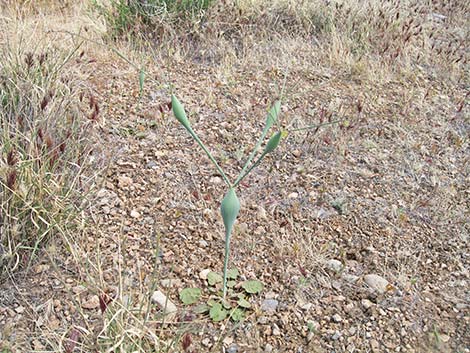 |
General: Desert Trumpet (Eriogonum inflatum) is a biannual forb with a small basal rosette of thick, dark green leaves, a single erect main stem to about 18-inches tall, and many terminal branches. The top of the main stem is greatly inflated; other nodes are slightly inflated. The terminal branchlets are thin and wispy. Flowers hang from the terminal branchlets. Desert Trumpet is a common component of vegetation communities in dry, well-drained sandy and gravelly areas on desert flats, bajadas, and moderate slopes in the lower mountains in the Lower Sonoran (Creosote-Bursage Flats) and Upper Sonoran (Mojave Desert Scrub and Pinyon-Juniper Woodland) life zones. Family: Buckwheat (Polygonaceae). |
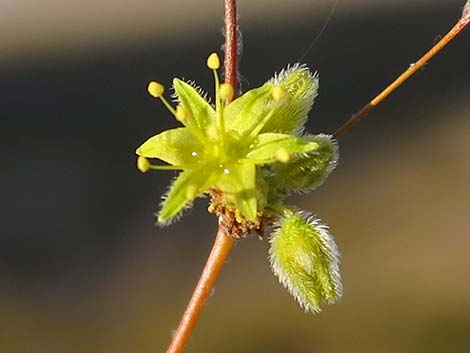 |
Other Names: Plant Form: Biannual forb. In the first year, only a basal rosette of leaves; in the second year, produces a single main stem with many terminal branches and many tiny flowers. Height: Flowering stalk to about 3 feet. Stems: Narrow, swollen below nodes, especially the top of the main stem. Leaves: Basal rosette: blades to about 2-inches long, oblong, coarsely hairy. |
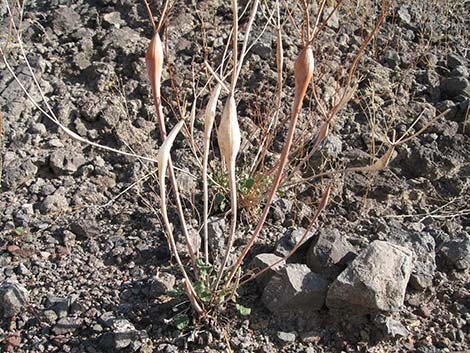 |
Flowers: Blooms in the spring, also sporadically throughout the summer and fall in response to rain. Inflorescence: many slender branches, upright and spreading. Flowers tiny, oblong, 1–3 mm, yellow; hanging from terminal stems. Seeds: Achene; small (2 mm). Habitat: Dry, well-drained sandy and gravelly on desert flats, bajadas, and moderate slopes in the lower mountains. Elevation: Below sea level to 6,500 feet. Distribution: California to Colorado and New Mexico, south into northwestern Mexico. |
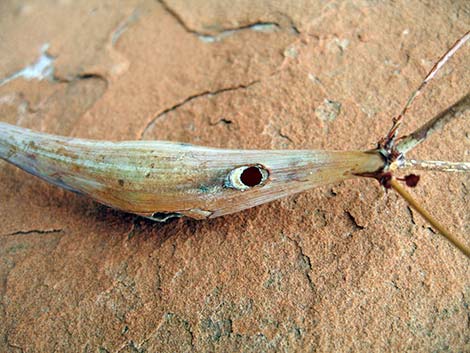 |
Comments: To me, the most interesting thing about this plant is that certain species of wasps chew holes near the top of in the inflated part of the stem and lay their eggs inside where they, presumably, are safe from predators. One species of wasp that lives around Joshua Tree National Park even fills the bottom of the hollow stem with grains of sand to build a flat platform on which to lay its eggs. Watch for small, round holes in the stem (see photo), and if you are in southern California deserts, check inside for sand. |
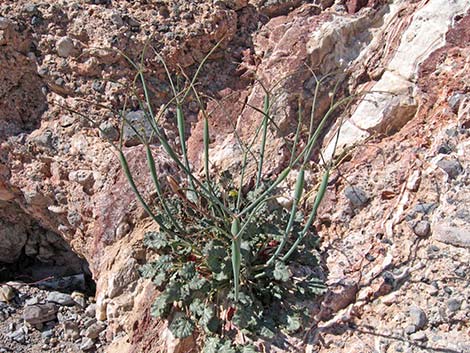 |
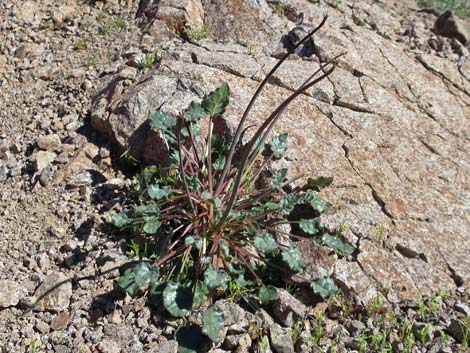 |
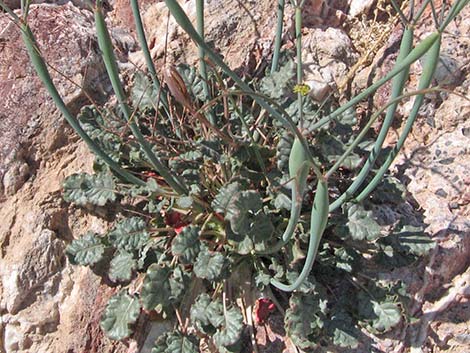 Fresh flowing stalks emerging in the spring |
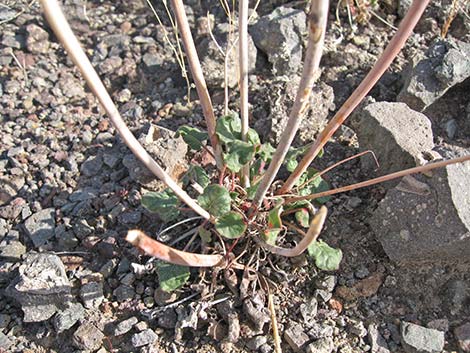 Old flowering stalks can persist into the spring |
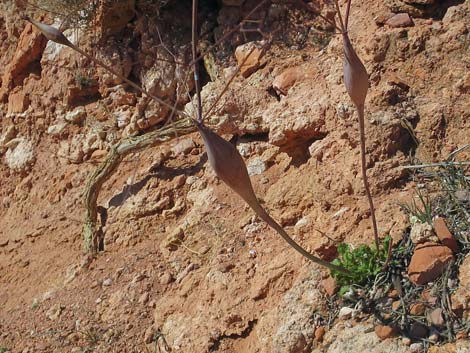 Leaves resprouting in early spring |
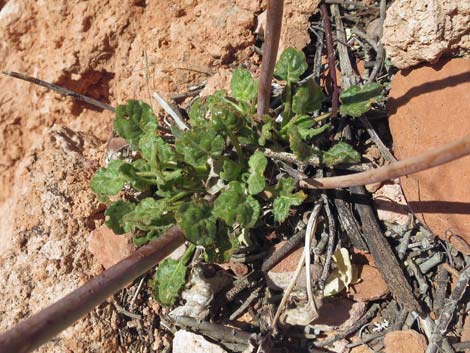 Leaves resprouting in early spring |
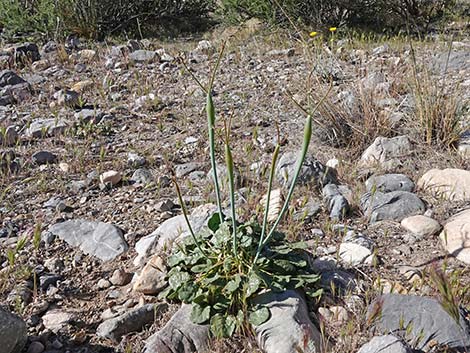 |
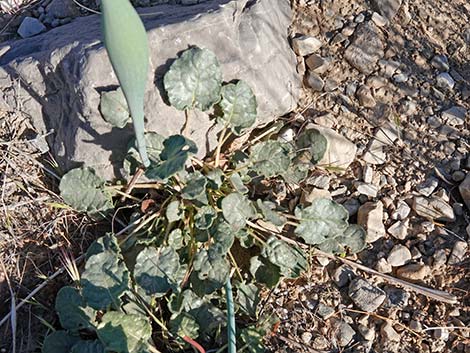 |
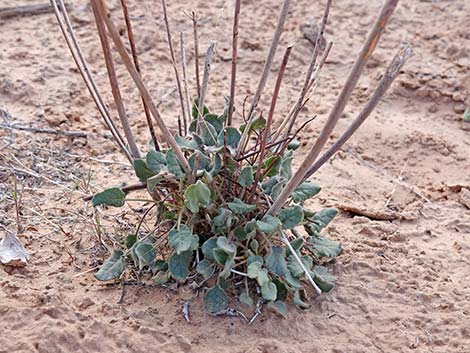 Basal leaves (basal rosette) with old stems |
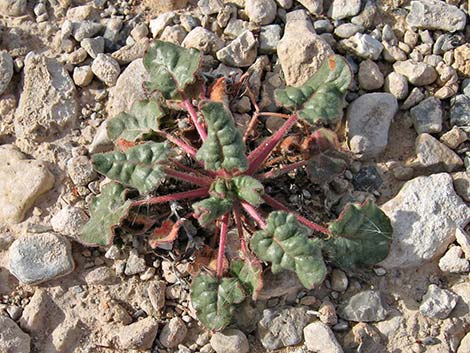 Basal leaves (basal rosette) without old stems |
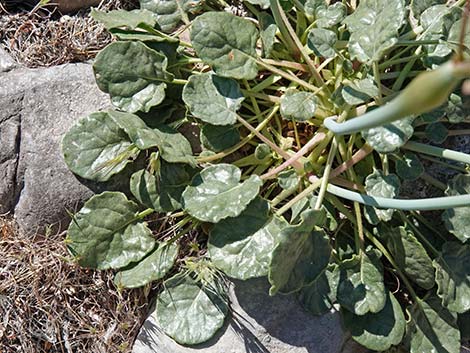 |
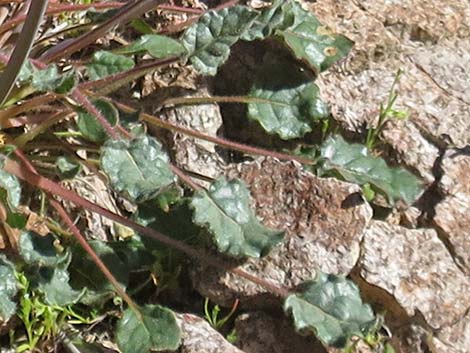 |
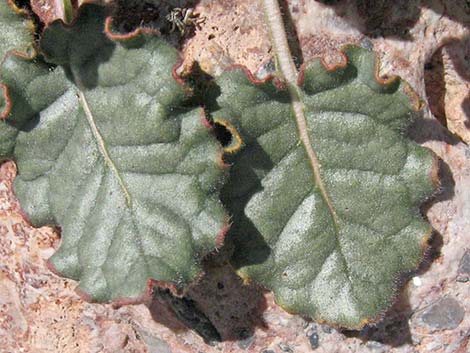 |
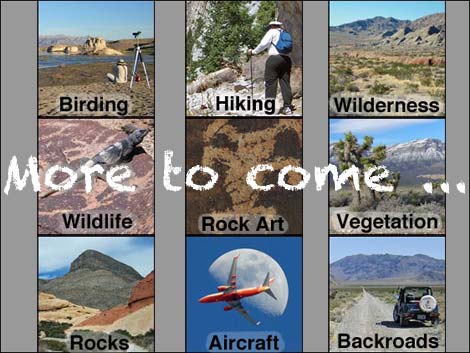 |
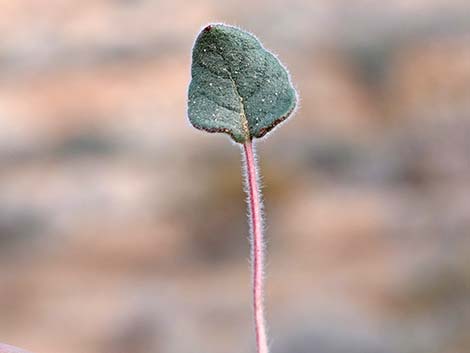 Hairs on fresh leaves produce an aura effect around the leaf |
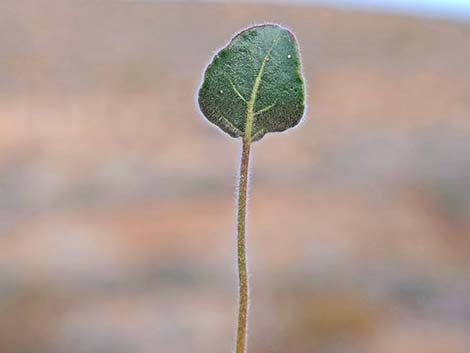 Hairs on fresh leaves produce an aura effect around the leaf |
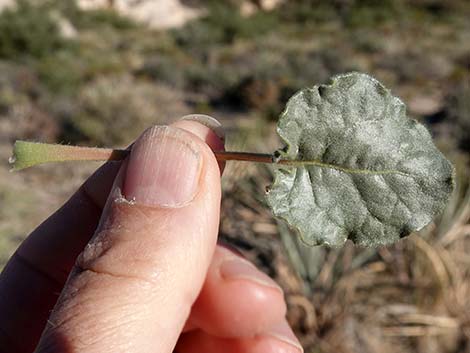 |
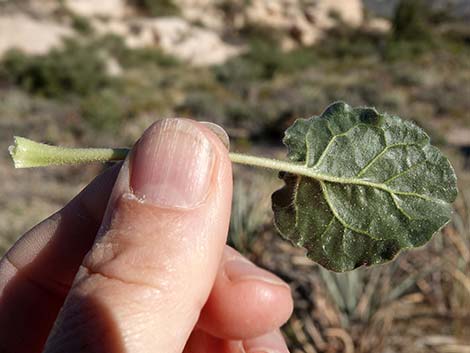 |
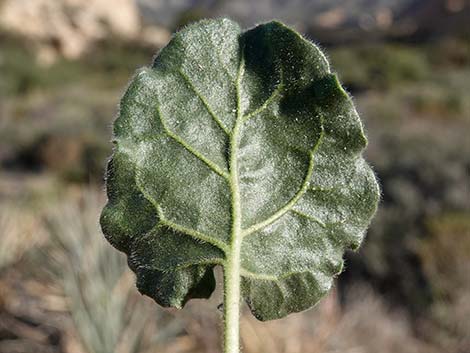 |
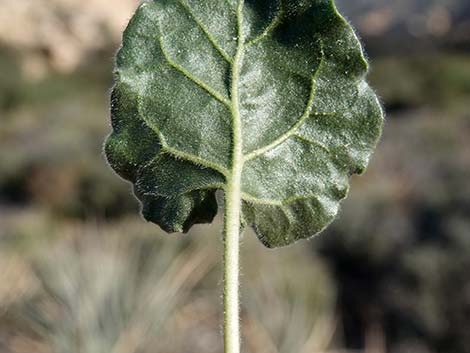 |
 Flowering stalks |
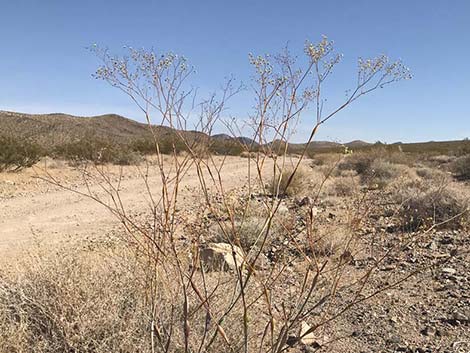 Flowering stalks |
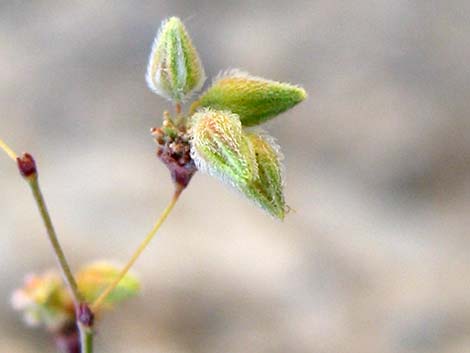 Flower buds |
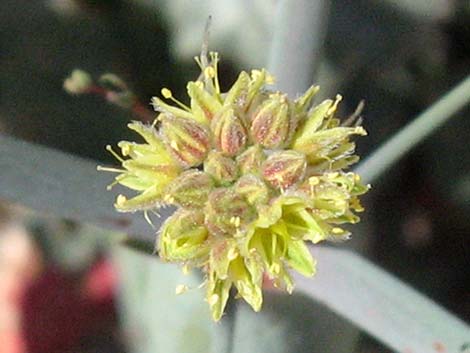 Cluster of flowers |
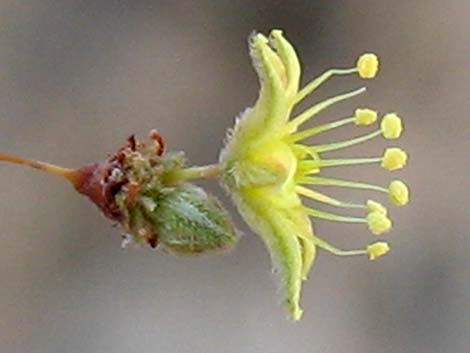 Single flower |
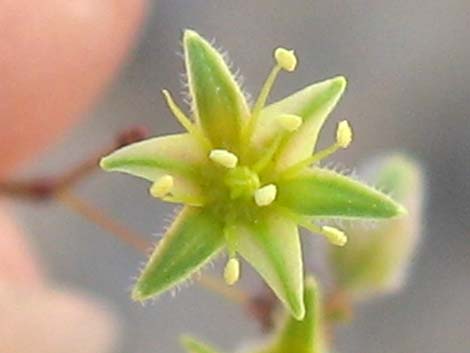 Single flower |
 |
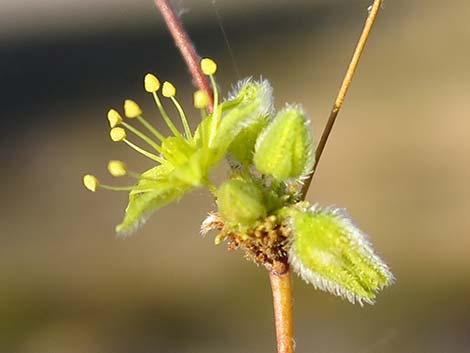 |
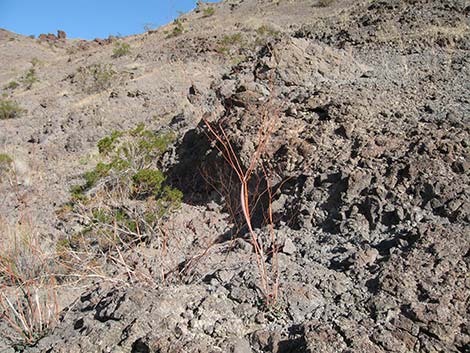 Dried flower stalks during summer |
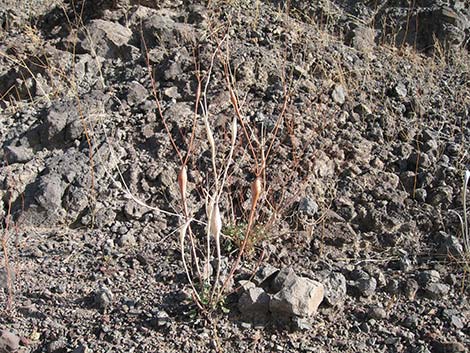 Dried flower stalks during summer |
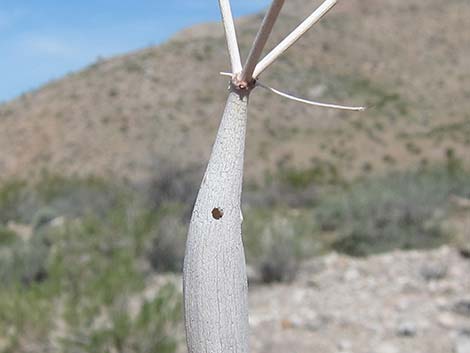 Wasp nest hole |
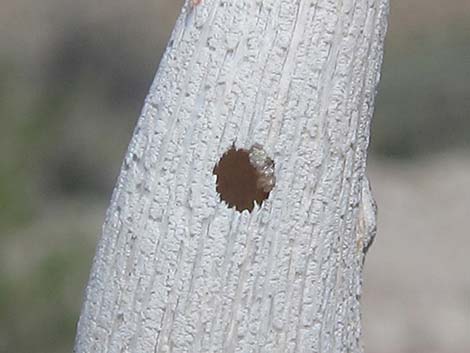 Wasp nest hole |
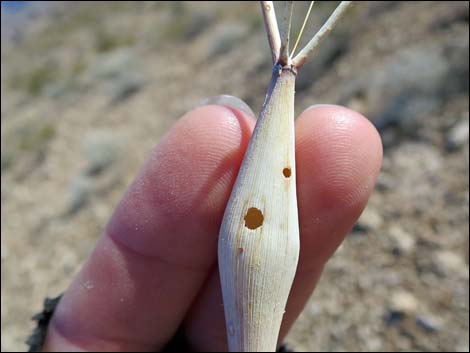 Wasp nest hole |
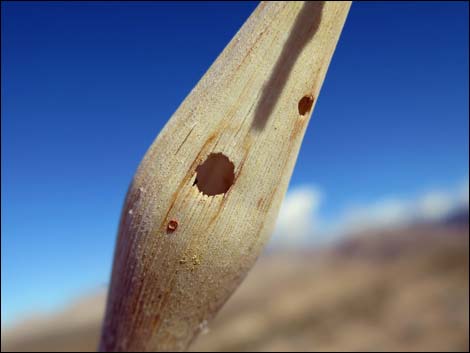 Wasp nest hole |
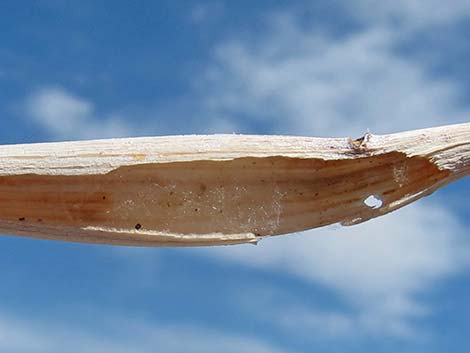 Inside wasp nest hole; note cottony web material |
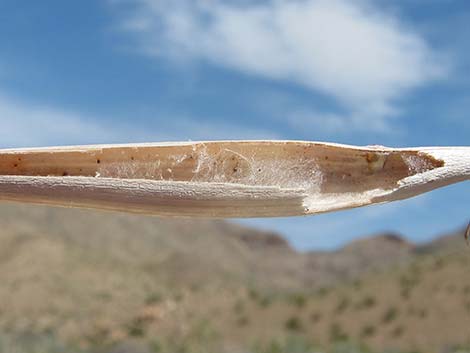 Inside wasp nest hole; note cottony web material |
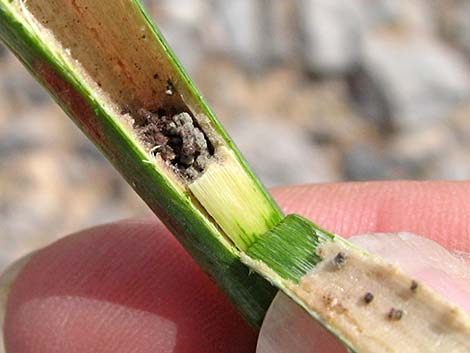 Inside wasp nest hole; fresh frass at bottom of the tube |
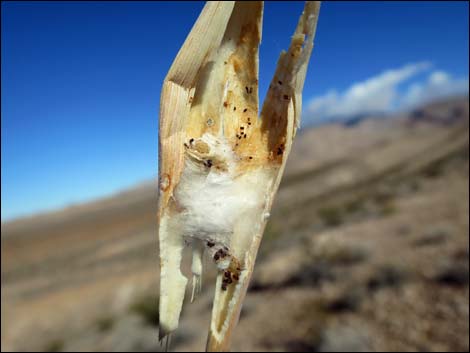 Inside wasp nest hole; note cottony web material |
Note: All distances, elevations, and other facts are approximate. Names generally follow the USDA database.
![]() ; Last updated 230814
; Last updated 230814
| All Perennial Forbs | Plant Species Index | Glossary | Copyright, Conditions, Disclaimer | Home |